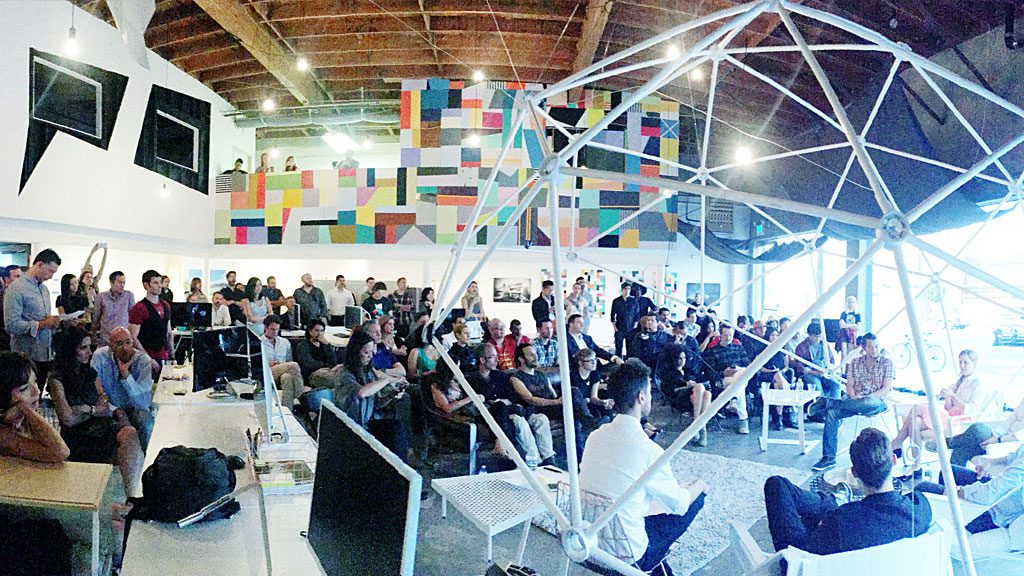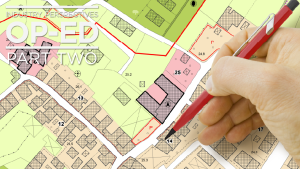Less than 50 per cent of architecture firms survive their first five years in business.
Most of you are probably thinking that’s actually not that bad for the architecture industry, except when we look at other service industries with a 70 per cent survival rating.
Part of the problem is we have set the bar so low in terms of expectations that the failure rate statistics don’t seem that bad to us anymore. That’s the scariest part.
According to the AIA, American architects were responsible for designing about $600 billion worth of buildings in 2017, for which they claimed about 4.8 per cent of. That’s $29 billion spread across approximately 365,000 employees and 110,000 licensed architects. These numbers are oddly disproportionate when compared to other licensed industries.

Let’s provide some context by comparing elements of workforce and salary between three professional accreditations that require licensure to practice: law, medicine and architecture. There are 950,000 practicing physicians and 1.33 million lawyers, thus making architects akin to a rare diamond. The starting average salary in the U.S. for lawyers is between $110,000 and $180,000. Medical residents range from $57,200 to $69,000, while architects earn a whopping $34,543 to $53,900 in their first year out of college.
Things start to look pretty good for lawyers and doctors as they approach years five through 10. The average salary for a doctor ends up between $267,500 and $489,000, while lawyers are bringing in anywhere from $271,950 to $391,300 on average with many taking bonuses in the millions.
By year five, architects are making anywhere between $137,060 and $157,360 through to year 10, still not as much as the upper end of a first year lawyer. You’re starting to see my point.
Architects assume an incredible amount of liability, which is part of the reason why they have started to extricate themselves from their duties. They are minimizing scope and in doing so, losing control over their projects. This is the opposite direction we should be looking.
In Roman times, architecture was a broader subject than at present, including the modern fields of architecture, construction management, construction engineering, chemical engineering, civil engineering, materials engineering, mechanical engineering, military engineering and urban planning. Without the architect cities and roads did not exist.
How is it that we have gone from a renaissance architect to where we are today?
It is not too late to look at the bigger picture and start reevaluating what the architecture firm of the future needs to look like.
While I don’t claim to have the answer, I can offer a strategy that works. I started my studio six years ago in my 540-square-foot apartment that I shared with my wife. We now have over 20 employees and 24 active projects around the world. The company did not originate in one of the ways an architecture studio typically emerges.
I spent my time building relationships with developers and understanding how the process works before we are hired and then I copied it. I started analyzing properties and assembling land so I could bring it to clients so they could hire us. I created our own projects.
How can an industry so rich in history and importance to all of our every day lives be in so much trouble? Moreover, how can we fix it? With just over 25 per cent of firms surviving their first 10 years it is of no surprise that a greater number of designers than ever are opting out of getting licensed with some moving to other industries completely.
We have an opportunity to elevate some of the greatest minds to solve global problems with bespoke solutions if we can only find a way to keep these bright young designers in architecture. The industry needs to change and accept that our survival depends on it.
We need to expand our scope in pre and post architecture.
While we can learn from the law and medical industry, selling our time at a higher rate or at a greater margin will not solve the underlying problems. It’s up to us to understand the process as a whole, not just the design, cost and scheduling but the real estate, the underwriting, and opportunities to assemble properties and create better neighbourhoods. We must become better developers.
We should also consider the post architecture and the value it can provide to a business. We are problem solvers and creators, we just need to start creating better business models so there is an industry left at the end of the day for our future generations.
We have the skills and technology to make our cities great and we’re starting to do that. It’s time we release the constraints of the modern day dogma and create a new business model that pays architects for the work they’re already doing and promotes their ability to control the process beyond building.
Let’s imagine a world where architects run our cities and design is the form of currency.
Matthew Rosenberg is the founder and CEO of M-Rad INC. Send comments and Industry Perspectives column ideas to editor@dailycommercialnews.com.
Enjoyed reading this article? Check out the DesignX newsletter for more top headlines and subscribe.










Recent Comments